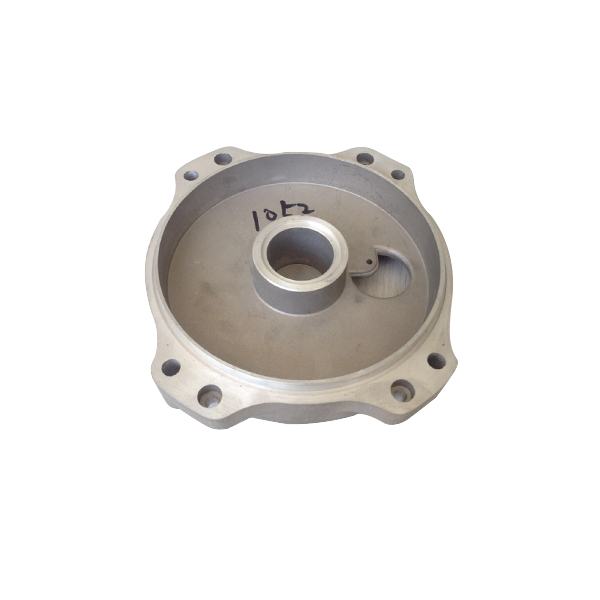Mobile:+86-311-808-126-83
Email:info@ydcastings.com
exhaust manifold engine
Understanding the Exhaust Manifold in Engine Functionality
The exhaust manifold is a critical component in an engine's exhaust system, playing an essential role in channeling exhaust gases from the combustion process out into the atmosphere. It is often overlooked by many car owners, yet its proper function is vital for the overall efficiency and performance of an engine. This article delves into the workings of the exhaust manifold, its design, materials, potential issues, and its impact on engine performance.
What is an Exhaust Manifold?
The exhaust manifold is typically a cast-iron or stainless-steel component mounted on the engine block. It collects exhaust gases from multiple cylinders and directs them into a single exhaust pipe that leads to the catalytic converter and eventually to the muffler. The manifold is usually the first component in the exhaust system, functioning to ensure that gases are expelled efficiently, minimizing back pressure, and improving vehicle performance.
Design and Functionality
The design of an exhaust manifold can vary depending on the engine configuration—inline, V-type, or flat engines will have differently shaped manifolds to accommodate specific layouts. Each cylinder in the engine produces exhaust gases after combustion; the manifold serves as a collector for these gases.
The primary function of the exhaust manifold is to gather these gases and direct them to the exhaust system. The manifold's design is crucial; it must optimize the flow of exhaust gases, prevent overheating, and withstand high temperatures. Many modern exhaust manifolds are engineered with fine tolerances to improve gas flow and reduce emissions, enhancing overall engine efficiency.
Materials Used
Traditionally, exhaust manifolds were made from cast iron due to its ability to withstand high temperatures and resist corrosion. However, advancements in materials science have led to the use of stainless steel and other alloys, which offer improved durability and weight savings. These materials provide better performance, especially in high-performance and turbocharged engines where heat can become a significant issue.
Common Problems
exhaust manifold engine

Despite their sturdy design, exhaust manifolds can experience several issues over time
. Some common problems include1. Cracks and Leaks Due to the high temperatures they are subjected to, manifolds can crack, leading to leaks. Exhaust leaks can result in decreased engine performance and efficiency, as well as increased emissions.
2. Warping Over time, heat cycles can cause manifolds to warp, altering their shape and effectiveness. A warped manifold can create poor sealing against the cylinder head, leading to exhaust leaks.
3. Carbon Build-up The accumulation of carbon deposits can restrict the flow of exhaust gases, leading to performance issues. Regular inspections and maintenance can help mitigate this issue.
4. Fastener Issues Bolts attaching the manifold to the engine can corrode or become loose over time, resulting in leaks and necessitating replacement or repair.
Impact on Engine Performance
The condition and design of the exhaust manifold significantly impact engine performance. A well-functioning manifold allows for efficient exit of exhaust gases, which in turn can improve engine power and fuel efficiency. Conversely, a damaged or poorly designed manifold can lead to increased back pressure, reduced performance, and even engine overheating.
Furthermore, modern engines equipped with advanced emission control systems rely on the exhaust manifold to effectively manage exhaust flow, ensuring compliance with regulatory standards while optimizing performance. In turbocharged engines, the manifold’s design affects turbo response and power delivery.
Conclusion
The exhaust manifold may be a small part of the entire vehicular system, but its role is paramount in ensuring the engine operates smoothly and efficiently. Understanding its function, the materials used, potential issues, and its impact on overall engine performance is essential for car enthusiasts and everyday drivers alike. Regular maintenance and inspections can help ensure the exhaust manifold remains in optimal condition, thereby supporting the engine's health and enhancing the driving experience. As automotive technology continues to evolve, so too will the design and functionality of exhaust manifolds, reflecting the ever-growing demands for performance, efficiency, and environmental responsibility.
-
Why Should You Invest in Superior Pump Castings for Your Equipment?NewsJun.09,2025
-
Unlock Performance Potential with Stainless Impellers and Aluminum End CapsNewsJun.09,2025
-
Revolutionize Your Machinery with Superior Cast Iron and Aluminum ComponentsNewsJun.09,2025
-
Revolutionize Fluid Dynamics with Premium Pump ComponentsNewsJun.09,2025
-
Optimizing Industrial Systems with Essential Valve ComponentsNewsJun.09,2025
-
Elevate Grid Efficiency with High-Precision Power CastingsNewsJun.09,2025











